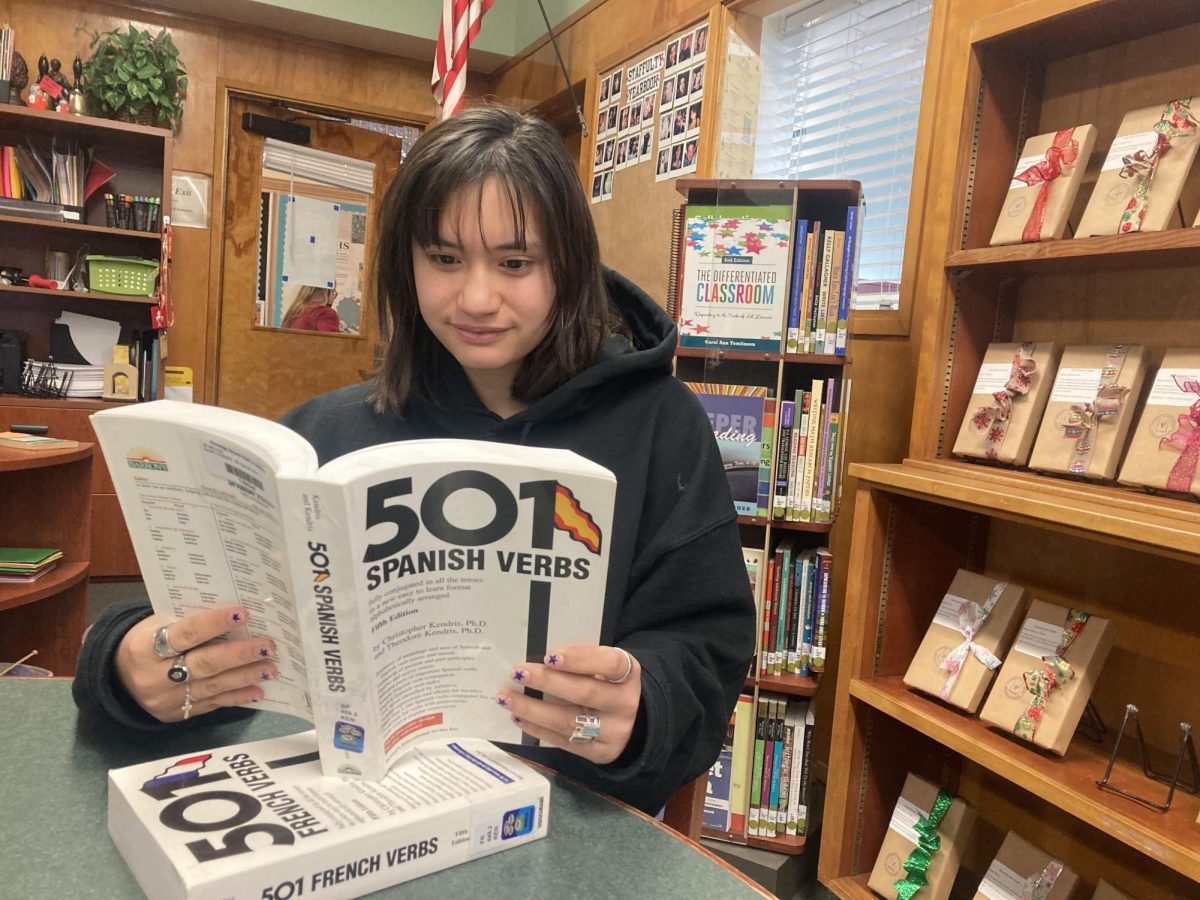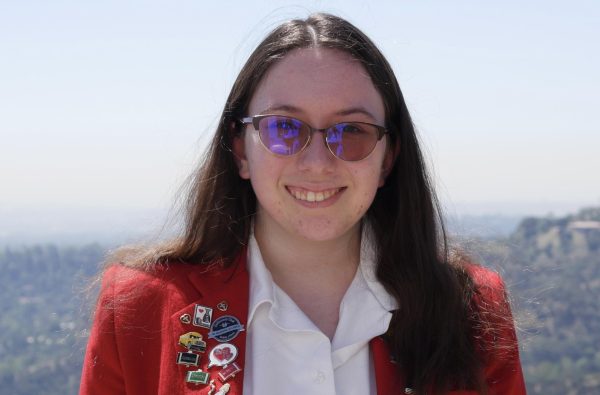French language and culture is deeply ingrained in the English language and American culture. For example: you know what “bonjour” means, intuitively. But although French is the foundation for so much of the English language, and French culture has, for hundreds of years, defined what is “in” or not, very few students here on the Hill have gone past “bonjour” and decided to take a French language class.
At Flintridge Sacred Heart Academy, students are required to take a foreign language during their freshman and sophomore years and can choose between French and Spanish. During junior and senior year, language classes are not required but encouraged. While around 250 students take Spanish, only 50-something are currently enrolled in French.
Why is this? French is one of the six official languages of the U.N. along with Arabic, Chinese, English, Russian and Spanish. A Romance language, French is similar to many other languages spoken in Europe, and for that reason was used, along with Latin, as a language of diplomacy in much of the Western world for centuries. According to the Catholic University of America, “French is the first or second language in more than 40 countries and is spoken by 125 million people around the world, on every continent,” (CUA) so it is hardly an impractical language.
Dr. Lara Walker, World Languages department chair and teacher, believes that students on the Hill are unaware of the benefits of speaking French.
“French is spoken on five continents…it’s the official language of 27 nations, it’s the second most widely learned foreign language in the world after English and the fifth most widely spoken language in the world,” Dr. Walker said.
Tologs are not unique in turning away from French. American students as a whole are not taking foreign languages. While 92% of European students from primary to secondary school take a second language, only 20% of American students do.
But why is Spanish not on the decline too? Dr. Walker thinks that students may be overlooking French because of where the Hill is geographically.
“I think living in California… one might not consider it,” Dra. Walker said.
Additionally, many prospective Tologs attend middle schools where French is not offered. Holy Family Catholic School, a FSHA “feeder” school, promises on its website that “after 8th grade, students can test out of Spanish I for high school,” (HFCS) but makes no mention of French.
At St. Francis High school, a fellow Catholic high school in the La Cañada Flintridge area, French is not offered, and students take Spanish or Latin instead.
In the past, French and Spanish were not the only options on the Hill. Latin was a small but mighty department in the World Languages offering, but it faded out in the early 10s. But Latin is a dead language. French, not so much. Dr. Walker pointed out that the lack of interest in French has nothing to do with the standard of the curriculum.
“Our French program is really really strong, and it’s even stronger in the past few years with Dr. Besinque… our students do well in the program and they do well going through AP,” Dr. Walker said.
Dr. Kristen Besinque, the sole French teacher here on the Hill, has previously taught at schools as varied as USC, Scripps College and even the Sorbonne, France’s most prestigious university. She believes that French is given a false reputation for being difficult.
“I think that there is, even in school systems, this idea that the French language programs are more rigorous than the Spanish language programs, which is categorically untrue,” Dr. Besinque said.
Dr. Besinque insists that the French and Spanish programs at Flintridge Sacred Heart Academy are equally demanding and accessible, because of the leadership of Dr. Walker, about whom she says, “never have I seen so much control over a curriculum, so much mastery, so much passion.”
“Collaborating with her, as the sole French teacher at FSHA, has been the best learning experience of my life in terms of becoming an expert in language acquisition,” Dr. Besinque said.
During Covid, enrollment numbers fell. And while they are back up here on the Hill, small departments like the French department were hit hard by the drop, and are still working to get back to pre-Covid numbers.
“We’ve had two French teachers in the past, and then [in] 2020, the whole student body went down, so we lost one of the French teachers,” Dr. Walker said.
According to a 2016 report by the Pew Research Center, only 36% of Americans believe that knowing a foreign language is important to be successful in today’s economy. And while Spanish is the most spoken language in California besides English, French doesn’t even make the top five. Tologs simply aren’t hearing French out and about in California as much as they are hearing Spanish, unless they have ties to French culture. But California is not the world.
“If you want to do anything with cooking… fasion [or] diplomacy, [then] French is huge. French happens to be, for international business, one of the top languages, it’s the official language of the Olympics [and] it’s the official language of NATO,” Dr. Walker said.
With the diversity of opportunities for French speakers in mind, Dr. Besinque’s current goal for the World Languages department is to enlighten students about the practicality of learning French.
“I just want to bring more awareness to French and Francophone cultures and why it’s important in the world today,” Dr. Besinque said.
Dr. Besinque and Dr. Walker both emphasized that their goal is not to discourage students from taking Spanish but rather to inform them that French is offered here on the Hill, and is a language that can serve students in the future.
“There are students who want to do Spanish, and that’s great—we want them to do Spanish. But we want students [interested in French] who maybe just need to know more about French and then get to decide… we’re just trying to get a way [for] them [to get] more information so they can make a choice based on information, instead of a lack of information,” Dr. Walker said.
Julia Ihly ‘24, who took Spanish in middle school, decided to take French in high school for a personal reason.
“I have French ancestors… and so I wanted to connect with my culture deeper,” Ihly said.
She engages in additional practice at home with her mom, who speaks French fluently.
“I speak French a lot at home now too and email my mom in French. Sometimes my dad won’t know what we’re talking about because he just speaks a little bit of French,” Ihly said. “It’s just really fun because I get to connect with my mom on this whole different level,”
The real world applications of the French language, like in Ihly’s case, are exactly why Dr. Besinque and Dr. Walker are so excited to get more Tologs into French classes. And although Flintridge Sacred Heart Academy only offers French and Spanish currently, Dr. Walker is open to offering more.
“We would love to offer Mandarin as a third language,” Dr. Walker said. “Whenever anybody asks me, ‘Are those the only two offered?’ I say, ‘For right now.’”


